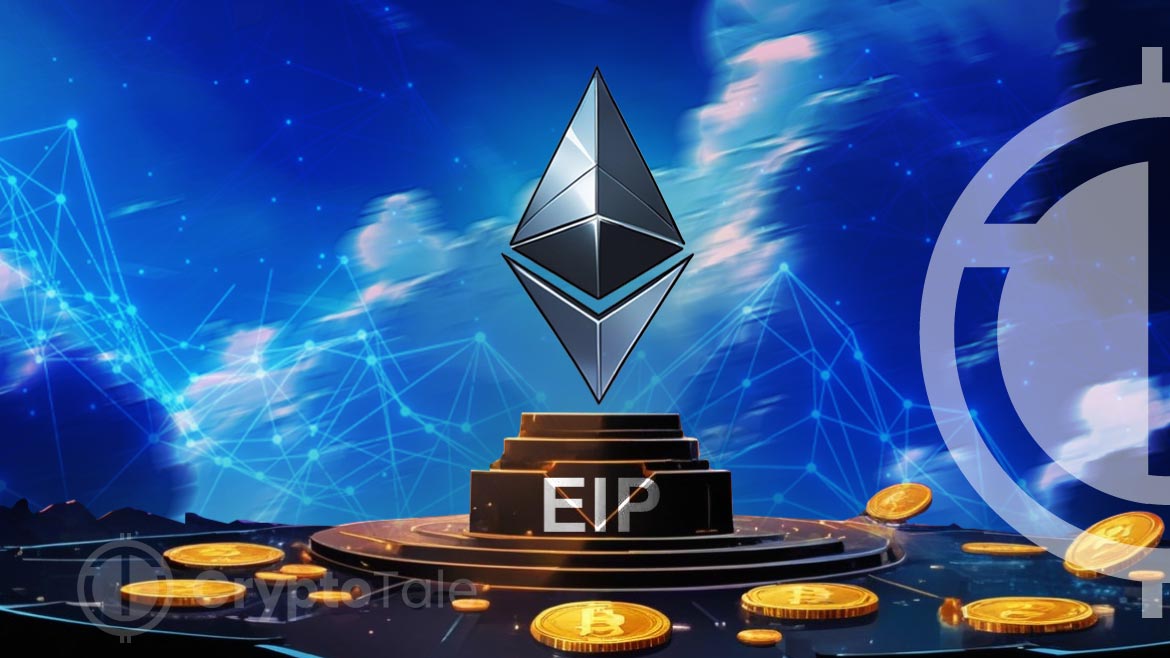
As Ethereum continues to evolve, several Ethereum Improvement Proposals (EIPs) are set to impact the network in 2024. These proposals aim to enhance scalability, security, and functionality and address the network’s current limitations by introducing new and innovative solutions. They also play a crucial role in maintaining Ethereum’s leading position for decentralized applications and smart contracts. This article will give you a description of the key Ethereum EIPs in 2024.
Key EIPs to Keep a Close Eye on in 2024
EIP – 4844 (Proto-danksharding)
EIP-4844, a key component of the Ethereum Dencun update implemented on March 13, 2024, has reduced transaction fees on layer-2 networks, especially those using roll-up technology. It addresses issues related to data availability for L2 networks, thereby reducing the cost of L2 solutions. Proto-danksharding is introduced to create a new type of temporary data known as binary large objects (blobs). These blobs are removed from the chain after a predetermined period of time, reducing the data burden.
Before the launch of the update, rollups relied on calldata to store transaction data, which was costly. Furthermore, this process made the blockchain clumsy, as all Ethereum needed to process and store the data permanently on EVMs. In contrast, blobs have approximately 125 kilobyte payloads and are stored on the Ethereum consensus layer instead of the EVM. This method reduces storage overhead and allows for cheaper transactions.
Although rollups might seem to be the primary beneficiary of EIP-4844, other use cases can also temporarily leverage this cost-effective data storage. It is considered a major step toward full danksharding, which is an advanced scaling solution that will enhance Ethereum’s capabilities.
Ethereum’s Daily Users Grow 9X in Four Years; Analysts Eyes $22K by 2030 for ETHEIP – 1153 (Transient Storage Opcodes)
The main reason behind the costly Ethereum transactions was the permanent recording of data on the blockchain. EIP-1153 solves this problem by using temporary storage. It creates a transient storage that allows for temporary data storage and access needed for single transactions. This method reduces the gas fees associated with the permanent storage of data on the blockchain.
Furthermore, with the increase in data retrieval speed, smart contracts can function more efficiently, reducing the need for long-term storage and decreasing transaction fees. This allows programmers to use transient storage for inter-component communication, calculations, and temporary variables within a single transaction.
EIP – 4788 (Beacon Block Root Commit)
EIP-4788 offers to integrate a “Beacon Block Root” into each EVM block, which enhances the alignment between the EVM and the Beacon Chain. This allows the protocol to gain access to important information, like validator balances and states, from the consensus layer, improving security and operational efficiency. It functions as a protocol-level oracle, relying on Ethereum’s consensus state throughout the mainnet.
EIP – 5656 (MCOPY Opcode)
EIP-5656 introduces a new opcode called MCOPY to simplify the process of copying data within the memory of smart contacts. Opcodes are instruments used by smart contracts to perform tasks while existing opcodes for large data copies are expensive and time-consuming. For this problem, MCOPY provides a more efficient solution, which reduces gas expenses and enhances performance. This opcode is especially useful when it comes to manipulating arrays and strings, handling big data sets, and building complex data structures within smart contracts. By solving inefficiencies and high costs in the current EVM architecture, it optimizes memory operations providing developers with more tools to optimize their work.
Analyst Predicts NOT Dip Before Potential Bullish Surge: ReportEIP – 6780 (Limited Self-Destruction)
Before, Ethereum smart contracts were able to fully delete themselves with the help of an opcode called “SELFDESTRUCT.” Although this may be convenient, it often causes issues like disorganization of code and data and could potentially create security issues. However, with the development of EIP-6780, a self-destructing contract, it can send its remaining Ether to a designated address while the contract itself persists on the blockchain. Furthermore, the self-destructing contract is only allowed within the same transaction as the contract’s creation.
By limiting this feature, Ethereum hopes to streamline data management, increase scalability, and manage the state size. In addition, a cleaner system improves the blockchain’s stability and adaptability while supporting scalability and maintenance of the network for future upgrades.
ERC – 4337 & ERC – 6900 (Account Abstraction)
This ERC is poised to revolutionize the way users interact with wallets by making gasless transactions the standard and secure social logins common. It confuses the distinction between externally owned accounts and contract accounts. Enabling advanced features like multisig wallets, which require multiple signatures for a transaction, and a social recovery mechanism where trusted individuals can help recover lost keys. The ERC-6900 introduces the concept of “delegated transactions,” which enables users to authorize others to perform transactions on their behalf, thereby saving time and reducing the effort involved.
Conclusion
EIPs are set to bring huge changes to the Ethereum network. From reducing transaction fees and optimizing storage to enhancing data access, these EIPs address critical aspects of scalability, security, and user experience. Staying informed about these EIPs is important for developers and investors to better understand the future of Ethereum and its impact on the blockchain industry.














